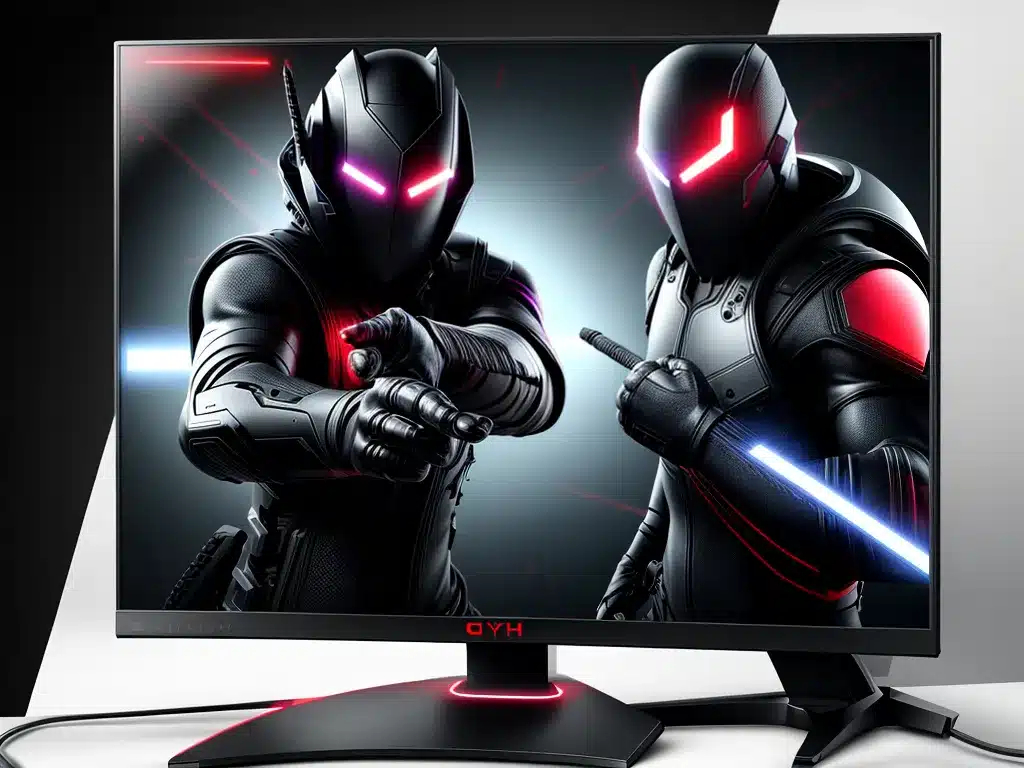
Introduction to G-Sync and FreeSync
Gaming on a PC can be an immersive experience, but stutters and screen tearing can ruin that immersion. G-Sync and FreeSync are two technologies that help eliminate stutters and screen tearing by synchronizing the monitor’s refresh rate with the GPU’s frame rate. This results in a much smoother gaming experience with reduced input lag.
Nvidia’s G-Sync is proprietary technology that requires a dedicated G-Sync module inside the monitor. AMD’s FreeSync is based on open standards and doesn’t require any special hardware, making FreeSync displays more affordable. Both technologies serve the same purpose of eliminating screen tearing and stuttering for a better gaming experience.
How G-Sync and FreeSync Work
Traditionally, monitors have a fixed refresh rate of 60Hz, meaning the screen is refreshed 60 times per second. GPUs, however, can have variable frame rates based on the game’s graphics demands. This mismatch between the GPU’s frame rate and the monitor’s refresh rate is what causes screen tearing and stuttering.
G-Sync and FreeSync solutions match the monitor’s refresh rate to the GPU’s frame rate using technologies like variable refresh rate (VRR). This synchronization eliminates screen tearing and allows for a smooth gaming experience.
G-Sync requires a dedicated G-Sync processor in the monitor that communicates directly with the GPU. It can operate between 1-240Hz refresh rates.
FreeSync uses industry standard technologies like DisplayPort Adaptive-Sync. The GPU communicates with the monitor through the display connector. FreeSync monitors have a VRR range of around 48-144Hz.
Both G-Sync and FreeSync offer low framerate compensation (LFC) which doubles the frame rate if it goes below the monitor’s VRR range. This prevents stuttering at very low FPS.
Benefits of G-Sync and FreeSync
Here are some of the key benefits of using G-Sync or FreeSync monitors for gaming:
-
Eliminates screen tearing – Syncing refresh rates prevents screen tearing artifacts from forming.
-
Smoother gameplay – Matching refresh rates results in much smoother motion and gameplay.
-
Reduces input lag – Direct communication with GPU reduces delay between input and output.
-
Supports variable frame rates – VRR tech allows syncing across a wide range of FPS.
-
Enhances immersion – Tear-free and stutter-free visuals provide an immersive gaming experience.
-
Compatible with popular GPUs – FreeSync works with AMD graphics cards. G-Sync requires Nvidia GPUs.
-
Affordable pricing – FreeSync monitors are generally cheaper than the G-Sync equivalents.
Real World Performance Differences
In real world gaming, both G-Sync and FreeSync deliver similarly excellent results when operating within their supported VRR range. The gaming experience is free of tearing and stuttering.
G-Sync has a wider VRR range, lower latency, and more robust software features like variable overdrive. But it comes at a premium price.
FreeSync monitors are more affordable while providing the core adaptive sync experience. Performance is comparable to G-Sync, but at a lower price point.
Most gamers are well served by FreeSync monitors given their cheaper pricing and core syncing capabilities. Hardcore competitive gamers may benefit from G-Sync’s wider range and lower latency. But for casual gamers, FreeSync offers the better value.
Gaming Monitor Recommendations
Here are some of the best G-Sync and FreeSync gaming monitors currently available:
G-Sync Monitors
-
Asus ROG Swift PG279Q – 1440p, IPS, 165Hz refresh rate. The top 1440p G-Sync monitor.
-
Acer Predator XB273K – 4K, IPS, 144Hz refresh rate. Excellent 4K gaming monitor.
-
Alienware AW2521HFL – 1080p, IPS, 360Hz refresh rate. Best high refresh 1080p monitor.
FreeSync Monitors
-
LG 27GL850 – 1440p, IPS, 144Hz refresh rate. Great 1440p gaming monitor with wide gamut.
-
ViewSonic VX2758 – 1440p, IPS, 144Hz refresh rate. Affordable 1440p FreeSync option.
-
AOC C24G1 – 1080p, VA, 144Hz refresh rate. Curved 1080p monitor with great contrast under $200.
Conclusion
G-Sync and FreeSync transform the gaming experience by matching refresh rates for tear-free, stutter-free visuals. While G-Sync offers slightly lower latency and wider range, FreeSync provides an affordable path to smooth variable refresh rate gaming.
When choosing a gaming monitor, think about your graphics card, target resolution and refresh rate, panel type, and budget. Pick a G-Sync monitor for Nvidia GPUs or FreeSync for AMD. Prioritize hitting your desired resolution and refresh rate first before paying extra for G-Sync’s advantages.












